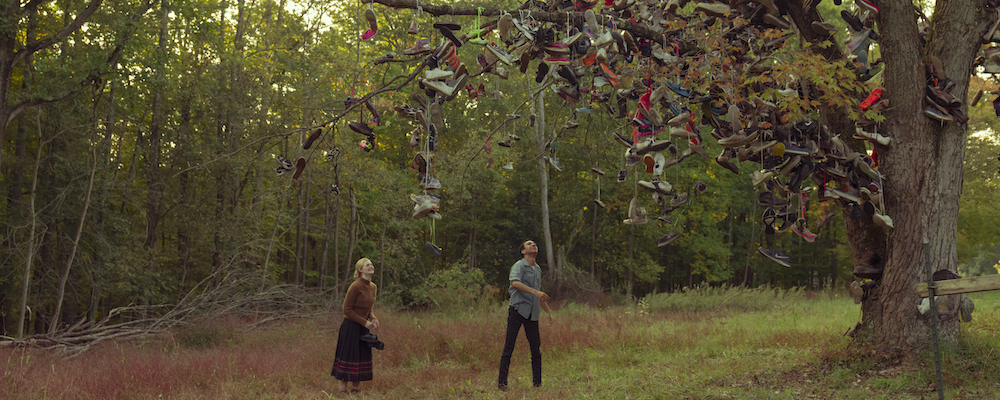Netflix’s Adaptation of ‘All the Bright Places’ Explores Themes of Friendship and Sorrow With Maturity
Alci Rengifo
In “All the Bright Places,” the emotional journey of adolescence comes with silent time bombs. It’s another Netflix adaptation of a young adult novel, this time a bestseller by Jennifer Niven. While it features some of the airy appeal to the emotions common to the genre, it’s also not a rehash. This is a reflective, heartfelt film about being a teenager while grappling with traumatic experiences.
Set in Indiana, the story focuses on Violet Markey (Elle Fanning), who one day steps on the edge of a bridge and contemplates jumping. She’s stopped by Theodore Finch (Justice Smith), a classmate who luckily catches her while on a morning run. Both are from different cliques but are dealing with personal scars. Violet may be pretty and popular, with a jock boyfriend, but she’s still processing the sudden death of her sister in an accident. Theodore is known around school as a “freak” because of his sudden, erratic behavior which hints at a bipolar disorder. He also has an obsession with suicide. After connecting through a literary tag game based around Virginia Woolf, the two decide to collaborate on a class “wandering project,” where they must explore their town and its various key sites. But as Violet seems to find a new stability Theodore spirals deeper into his own dark place.
YA books and films tend to swerve between offering melodramatic schlock to teen audiences to taking them seriously as young adults. A perfect choice for directing “All the Bright Places” is Brett Haley, who previously made the charming “Hearts Beat Loud” about a father bonding with his daughter through musical talent. Haley chooses to contrast the darkening emotional cloud of the characters with the sun-kissed aesthetic of their surroundings, giving the movie an almost dreamy mood which enhances the tragedy of youth feeling despair when it should be rejoicing in its freedom. Violet and Theodore explore Indiana’s wooded areas and rivers, finding the true bonds of friendship and then attraction. But in private they are grappling with pain, and in Theodore’s case he has notes tacked all over his wall, he talks back to his counselor with funny wit and deals with classmates seeing him as odd, even dangerous. The story never goes to any extremes. It evokes what it’s like feeling as an outsider and how it makes adolescence much harder.
Haley recently shared with Entertainment Voice that, “I read it and was incredibly moved by it and saw a version of it that really spoke to me as a human. I felt this was a big, bold, emotional romance…it’s something I really connected to.” As Violent and Theodore grow closer Haley intelligently explores their developing romance with subtly. Fanning and Smith show off their acting abilities with a special refinement. They don’t overplay anything. Theodore is the more bold one, going to Violet’s window and proposing road trips, but he’s also hiding his bipolar situation. The result is that their bond develops naturally onscreen, as feelings tend to do in real life.
“The core of what you’re working with is an emotional truth where you don’t overstep your limitations with how people actually are,” said Haley about crafting the genuine tone of the onscreen relationship. “If there’s anything about my films that you can follow it’s the connectivity. This is about connectivity, about connecting with other people, whether they be your dad, or your boyfriend or even your pool guy.” Violet and Theodore have family relationships that do provide another layer of support. Violet’s parents, James (Luke Wilson) and Sheryl (Kelli O’Hara), are loving but try to give space, while Theodore lives with his sister Kate (Alexandra Shipp), who provides a motherly figure. “I’m putting people together who might not belong together. That’s the fun of it. Do Finch and Violet on paper look like they will fall in love and have this adventure? No. But in this journey of life we surprise ourselves with who we end up with. In general I’m interested in the oddballs coming together, unique relationships coming together.”
“Elle as an actor, beyond her instincts as a producer which are incredible, you can’t say enough good things about her. I think she’s the most talented actor of her generation,” said Haley about Fanning. For the young actress this is another example of her range. Starting very young Fanning has dabbled in everything from neo-surrealism in “The Neon Demon” to edgy period drama in Sofia Coppola’s “The Beguiled,” to Disney blockbuster action in “Maleficent.” But with a small project like “All the Bright Places” she’s allowed to both be young and explore a particular kind of vulnerability. Used to fame, Fanning is allowed to play someone processing trauma by preferring to keep to themselves. It’s a wonderful performance done with a maturity you don’t always get in at least the weaker YA films. Justice Smith is also allowed to explore deeper waters, playing Theodore as a charming personality masking a very serious psychological downturn. “The shoot overall was a joy. It doesn’t get any better.”
With so many loud films coming out recently, here’s a quieter offering still featuring searing emotions. We want Violet and Theodore to bond and grow, yet “All the Bright Places” soberly understands that finding love is a challenge in a world that’s rarely easy and friendship can be a lifeline. “I think the film is a conversation. It’s not a statement on mental health or grief or romance, or any of these big topics that we take on. To me it’s a conversation with the audience. I want it to open up the conversation even more on mental health and dealing with grief and negative feelings. Everyone is dealing with their own stuff. When you see people, be kind, because you never know what someone is dealing with.”
“All the Bright Places” begins streaming Feb. 28 on Netflix.

